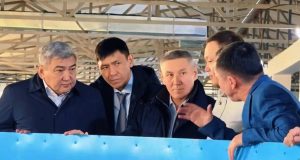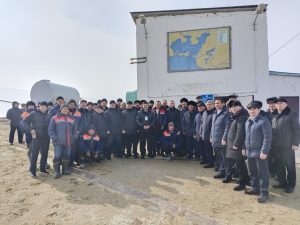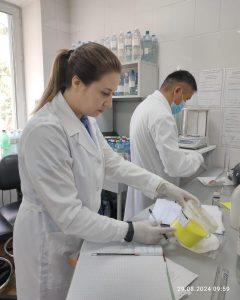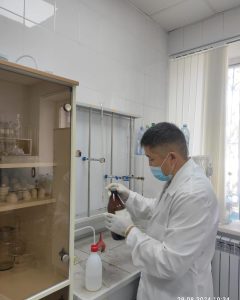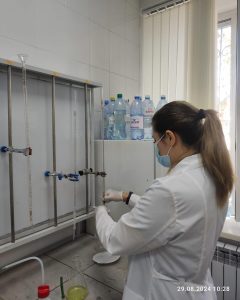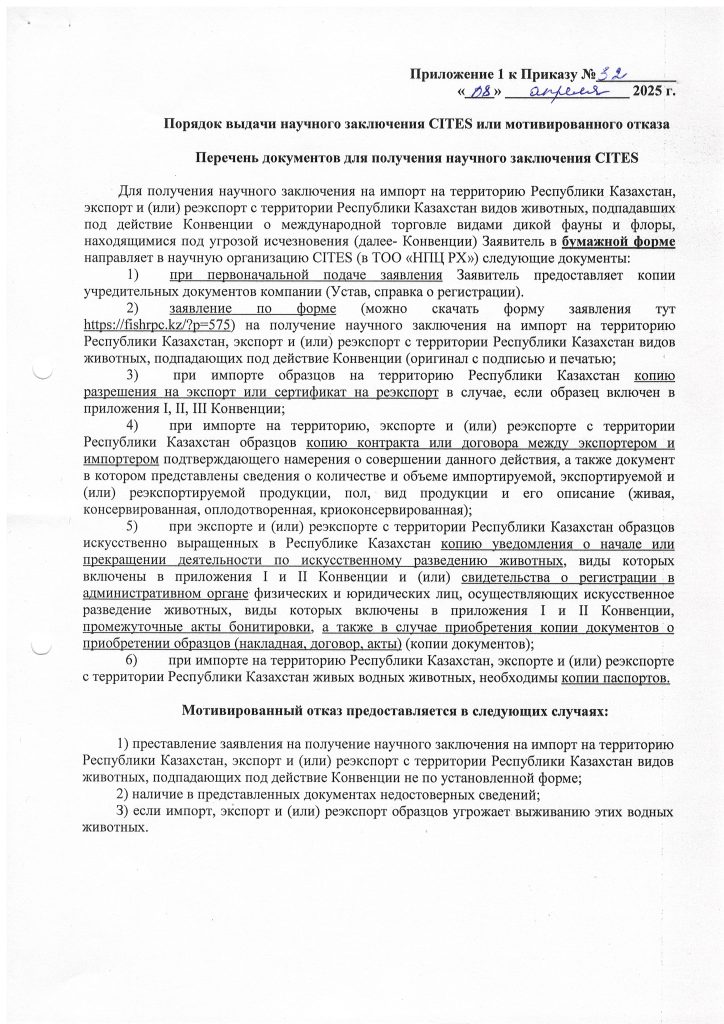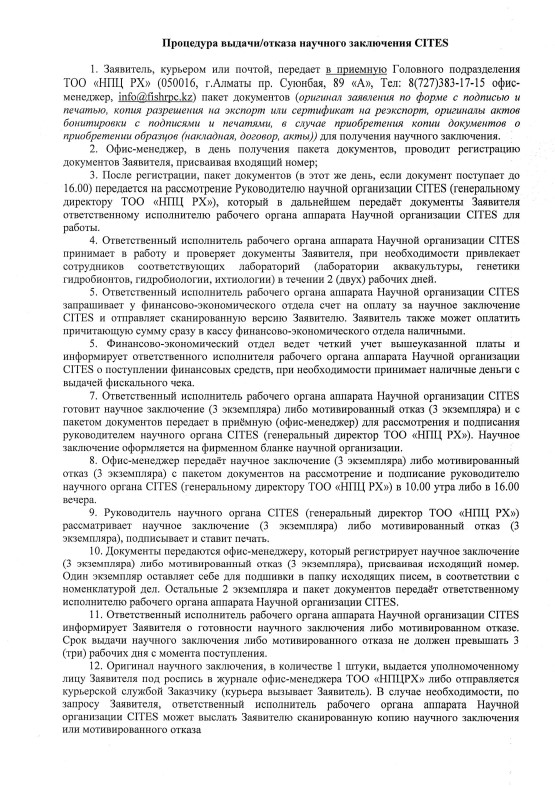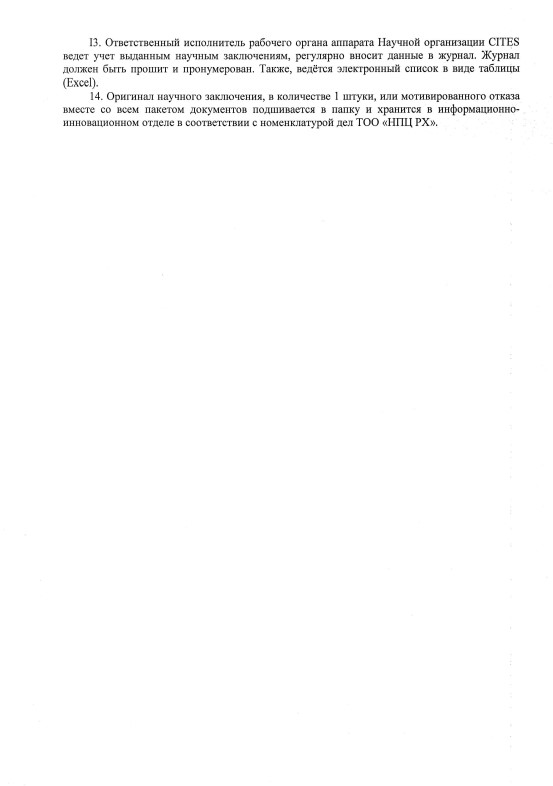- Title of the work: Determination of fish productivity of fishery reservoirs and / or their sections, development of biological justifications for the maximum allowable catches of fish and other aquatic animals, the regime and regulation of fishing in fisheries reservoirs of international and national significance and protected areas of the Aral-Syrdarya basin, as well as assessment of the state of fish resources in reserve reservoirs of local significance
Customer: Committee of Fisheries of the Ministry of Ecology, Geology and Natural Resources of the Republic of Kazakhstan
State registration number: 0123RK00005
Implementation period: 2023-2023
Type of work: Applied научноscientific andresearch work
Objective: To conduct scientific research to determine the fish productivity of fishery reservoirs and/or their sites, to develop biological justifications for fishing limits for fish and other aquatic animals, and to make recommendations on the regime and regulation of fishing in the fisheries reservoir of the Shardara reservoir and the Syrdarya River
Objects of research: Commercial fish populations and hydrobiocenoses of the Small Aral Sea, the Syrdarya River within the Kyzylorda region, Artemia cysts in the Tushchybas and Chernyshev bays of the Great Aral Sea, the Shardara Reservoir, the Syrdarya River within the Turkestan region, as well as local reservoirs of the Kyzylorda region
Fields of application: Ichthyology, fishing
Results obtained: The fishing situation in the reservoirs is analyzed, and materials on catches for fishing effort are given. Recommendations on optimizing the use of fish resources are given. Along with this, the hydrological and hydrochemical regime of reservoirs, the state of the food supply and populations of the main commercial fish species are analyzed. The impact of various environmental factors on the formation of fish resources has been assessed. The biodiversity and the level of quantitative indicators of feed for aquatic fishes in the water area of reservoirs have been established. Calculations of the fish catch limit for the period from July 01, 2024 to July 01, 2025 using the research results for 2022-2023 have been obtained. A report with inventory number No.0223RK00813 has been registered
- Title of work: Determination of fish productivity of fishery reservoirs and / or their sections, development of biological justifications for the maximum allowable catches of fish and other aquatic animals, the regime and regulation of fishing in fisheries reservoirs of international and national significance and reservoirs of protected areas of the Balkash-Alakol basin, as well as assessment of the state of fish resources in reserve reservoirs of local significance (section: Kapshagay reservoir, as well as floodplain areas and subordinate systems of the Ile River above the Kapshagai reservoir, Lake Balkash, delta of the Ile River. Mud and the riverbed. Ile below Kapshagayskaya HPP)
Customer: Committee of Fisheries of the Ministry of Ecology, Geology and Natural Resources of the Republic of Kazakhstan
State registration number: 0123RK00030
Implementation period: 2023-2023
Type of work: Applied нscientificresearch work
Objective: Toconduct scientific research to determine the fish productivity of fishery reservoirs and / or their areas, to develop biological justifications for the limits of fishing for fish and other aquatic animals, and to make recommendations on the regime and regulation of fishing on the lake. Balkash, the Ile River and in the reservoirs of the Ile River delta, on the Kapshagai reservoir and the Ile River, on the Middle Kolsai and Lower Kolsai lakes
Objects of research: The object of research is commercial fish populations and hydrobiocenoses of Lake Baikal. Balkash, the channel part of the Ile River below the Kapshagai hydroelectric power station and reservoirs of the Ile River Delta, Kapshagai reservoir and reservoir retaining zone (Ile River), reservoirs located in a specially protected area (SPNA)
Fields of application: Ichthyology, fishing
Results obtained: The fishing situation in water bodies is analyzed, and materials on catches per fishing effort are given. Recommendations for optimizing the use of fish resources are given. Along with this, the hydrological and hydrochemical regime of water bodies, the state of the food supply and populations of the main commercial fish species are analyzed. The assessment of the influence of various environmental factors on the formation of fish resources is carried out. Biodiversity and the level of quantitative indicators of hydrobionts forage for fish in the water area of reservoirs are established. Calculations of the fish catch limit for the period from July 01, 2024 to July 01, 2025 were obtained using research results for222022-2023. A report with the inventory number # 0224RK00004 was registered
- Title of the work: Determination of fish productivity of fishery reservoirs and / or their sections, development of biological justifications for the maximum allowable catches of fish and other aquatic animals, the regime and regulation of fishing in fisheries reservoirs of international and national significance and reservoirs of protected areas of the Balkash-Alakol basin, as well as assessment of the state of fish resources in reserve reservoirs of local significance (section: Alakol system lakes: Alakol, Koshkarkol, Sasykkol)
Customer: Committee of Fisheries of the Ministry of Ecology, Geology and Natural Resources of the Republic of Kazakhstan
State registration number: 0123RK00029
Implementation period: 2023-2023
Type of work: Applied нscientificresearch work
Objective: Toconduct scientific research to determine the fish productivity of fishery reservoirs and or their areas, to develop a biological justification for the maximum allowable catches of fish and other aquatic animals, and to make recommendations on the regime and regulation of fishing on Lakes Sasykkol, Koshkarkol and Alakol
Objects of research: Sasykkol, Koshkarkol and Alakol lakes
Fields of application: Ichthyology, fishing
Results obtained: The fishing situation in water bodies is analyzed, and materials on catches per fishing effort are given. Recommendations for optimizing the use of fish resources are given. Along with this, the hydrological and hydrochemical regime of water bodies, the state of the food supply and populations of the main commercial fish species are analyzed. The assessment of the influence of various environmental factors on the formation of fish resources is carried out. Biodiversity and the level of quantitative indicators of hydrobionts forage for fish in the water area of reservoirs are established. Calculations of the fish catch limit for the period from July 01, 2024 to July 01, 2025 were obtained using research results for222022-2023. A report with the inventory number # 0224RK00006 was registered
- Title of the work: Determination of fish productivity of fishery reservoirs and / or their areas, development of biological justifications for the maximum allowable catches of fish and other aquatic animals, the regime and regulation of fishing in fisheries reservoirs of international and national significance and protected areas of the Esil basin, as well as assessment of the state of fish resources in reserve reservoirs of local significance
Customer: Committee of Fisheries of the Ministry of Ecology, Geology and Natural Resources of the Republic of Kazakhstan
State registration number: 0123RK00002
Implementation period: 2023-2023
Type of work: Applied нscientificresearch work
Objective: Toconduct scientific research to determine the fish productivity of fishery reservoirs and / or their areas, to develop biological justifications for the limits of fishing for fish and other aquatic animals, and to make recommendations on the regime and regulation of fishing in fisheries reservoirs of international, national and local significance of the Esil basin
Objects of research: РThe Esil and Silety districts, local reservoirs of the Esil basin, as well as reservoirsof the Burabayand Kokshetau SSPES
Aboutthe bliss of application: Andchthyology, fishing
Results obtained: The fishing situation in water bodies is analyzed, and materials on catches per fishing effort are given. Recommendations for optimizing the use of fish resources are given. Along with this, the hydrological and hydrochemical regime of water bodies, the state of the food supply and populations of the main commercial fish species are analyzed. The assessment of the influence of various environmental factors on the formation of fish resources is carried out. Biodiversity and the level of quantitative indicators of hydrobionts forage for fish in the water area of reservoirs are established. Calculations of the fish catch limit for the period from July 01, 2024 to July 01, 2025 were obtained using research results for222022-2023. A report with the inventory number 0223RK00840 was registered
- Title of the work: Determination of fish productivity of fishery reservoirs and / or their sections, development of biological justifications for the maximum allowable catches of fish and other aquatic animals, the regime and regulation of fishing in fisheries reservoirs of international and national significance and reservoirs of protected areas of the Zhaiyk-Caspian basin, as well as assessment of the state of fish resources in reserve reservoirs of local significance
Customer: Committee of Fisheries of the Ministry of Ecology, Geology and Natural Resources of the Republic of Kazakhstan
State registration number: 0123RK00004
Implementation period: 2023-2023
Type of work: Applied нscientificresearch work
Objective: Toconduct scientific research to determine the fish productivity of fishery reservoirs and / or their areas, to develop biological justifications for the limits of fishing for fish and other aquatic animals, and to make recommendations on the regime and regulation of fishing in fisheries reservoirs of international, national and local significance in the Zhaiyk-Caspian basin
Objects of research: the Zhaiyk-Caspian basin, which includes the ZhaiykRiver, channels of the Zhaiyk River, which is part of protected areas, the eastern part of the Volga River Delta (Kigash River) with предустьевымиpre-estuary spaces, commercial fish species, local reservoirs
Fields of application: Ichthyology, fishing
Results obtained: The fishing situation in water bodies is analyzed, and materials on catches per fishing effort are given. Recommendations for optimizing the use of fish resources are given. Along with this, the hydrological and hydrochemical regime of water bodies, the state of the food supply and populations of the main commercial fish species are analyzed. The assessment of the influence of various environmental factors on the formation of fish resources is carried out. Biodiversity and the level of quantitative indicators of hydrobionts forage for fish in the water area of reservoirs are established. Calculations of the fish catch limit for the period from July 01, 2024 to July 01, 2025 were obtained using research results for222022-2023. Registered report with inventory number 0223RK00832
- Title of the work: Determination of fish productivity of fishery reservoirs and / or their sections, development of biological justifications for the maximum allowable catches of fish and other aquatic animals, the regime and regulation of fishing in fisheries reservoirs of international and national significance and reservoirs of protected areas of the Zaisan-Yertis basin, as well as assessment of the state of fish resources in reserve reservoirs of local significance
Customer: Committee of Fisheries of the Ministry of Ecology, Geology and Natural Resources of the Republic of Kazakhstan
State registration number: 0123RK00007
Implementation period: 2023-2023
Type of work: Applied нscientificresearch work
Objective: Toconduct scientific research to determine the fish productivity of fishery reservoirs and / or their areas, to develop biological justifications for the limits of fishing for fish and other aquatic animals, and to make recommendations on the regime and regulation of fishing in fisheries reservoirs of international, national and local significance of the Yertis basin. Assessment of the current state of stocks of the main commercial fish species, calculation of the maximum allowable volumes of fish resources and other aquatic animals taken, and development of recommendations for the rational management of fishing in the reservoirs of the Yertis basin
Objects of research: ГSmall-scale fishing reservoirs of the Yertis basin (Lake Zhaisan, Buktyrma reservoir, Ust-Kamenogorsk reservoir, Shulba reservoir, Ertis River, K. Satpayev CanalСатпаева), protected area reservoirs (Katon-Karagaysky GNPP-lake. Yazevoe, озChernovoe lake, Maralie Lake; Bayanaulsky GNPP – lake. Sabyndykol, ZhasybayLake Toraigyr; Markakolsky GPP-lake Markakol), local reservoirs of East Kazakhstan (Glubokovsky district-a tributary of the Yertis River near the village of Glubokoe, a pit in the village of Stepnoye, a pit in the village of Glubokoe, a pond near the village of Planidovka, Altai – lake district. Borodinskoe, pond-kopan of Oktyabrsky village, pond Vostok (pond farm KH Vostok), Ridder-reservoir on the Bolshaya Talovka River, Ulansky district-pond on the Kolbala RiverКолбала, pond on the Maimeken RiverМаймекен, Shemonaykhinsky district – pond on the Barashevka Stream, pond on the Berezovka River near the village of Moiseyevka, Samar – oz district. Komsomolskoye, Ust-Kamenogorsk-pond on the Ulanka River, pit No. 1 Ust-Kamenogorsk) and local reservoirs of the Abay region (Borodulikhinsky district – pond in the village of Andronovka, pond in the village of Bek-Quarry, Bolshoe Lake; Zharminsky district – Makovsky Pond; Semey-Linkovoe Lake, Sarybulak-2 pond, Urdzhar district-reservoir on the Karakol River), local reservoirs of Pavlodar region
Fields of application: Ichthyology, fishing
Results obtained: The fishing situation in water bodies is analyzed, and materials on catches per fishing effort are given. Recommendations for optimizing the use of fish resources are given. Along with this, the hydrological and hydrochemical regime of water bodies, the state of the food supply and populations of the main commercial fish species are analyzed. The assessment of the influence of various environmental factors on the formation of fish resources is carried out. Biodiversity and the level of quantitative indicators of hydrobionts forage for fish in the water area of reservoirs are established. Calculations of the fish catch limit for the period from July 01, 2024 to July 01, 2025 were obtained using research results for222022-2023. A report with the inventory number 0223RK00812 was registered
- Title of the work: Determination of fish productivity of fishery reservoirs and / or their sections, development of biological justifications for the maximum allowable catches of fish and other aquatic animals, the regime and regulation of fishing in fisheries reservoirs of international and national significance and reservoirs of protected areas of the Nura-Sarysu basin, as well as assessment of the state of fish resources in reserve reservoirs of local significance
Customer: Committee of Fisheries of the Ministry of Ecology, Geology and Natural Resources of the Republic of Kazakhstan
State registration number: 0123RK00006
Implementation period: 2023-2023
Type of work: Applied нscientificresearch work
Purpose: determination ofпределение the fishery value of the studied reservoirs, assessment of available commercial reserves for calculating the maximum allowable amount of fish withdrawal (MPD) for the period 01.07.2024-01.07.2025, issuing recommendations for the fisheries use of the Nura River and its floodplain reservoirs, local reservoirs from the reserve fund and reservoirs located in protected areas
Objects of research: оthe object ofresearch is the Nura River with floodplain reservoirs, local reservoirs from the reserve fund of Karaganda and Ulytau regions and reservoirs located on the territory of the State National Nature Park “Buiratau”, Lake Azhbay with plant and animal communities inhabiting them
Fields of application: Ichthyology, fishing
Results obtained: The fishing situation in water bodies is analyzed, and materials on catches per fishing effort are given. Recommendations for optimizing the use of fish resources are given. Along with this, the hydrological and hydrochemical regime of water bodies, the state of the food supply and populations of the main commercial fish species are analyzed. The assessment of the influence of various environmental factors on the formation of fish resources is carried out. Biodiversity and the level of quantitative indicators of hydrobionts forage for fish in the water area of reservoirs are established. Calculations of the fish catch limit for the period from July 01, 2024 to July 01, 2025 were obtained using research results for222022-2023. A report with the inventory number 0223RK00813 was registered
- Title of the work: Determination of fish productivity of fishery reservoirs and / or their sites, development of biological justifications for the maximum allowable catches of fish and other aquatic animals, the regime and regulation of fishing in fisheries reservoirs of international and national significance and protected areas of the Tobyl-Torgay basin, as well as assessment of the state of fish resources in reserve reservoirs of local significance
Customer: Committee of Fisheries of the Ministry of Ecology, Geology and Natural Resources of the Republic of Kazakhstan
State registration number: 0123RK00003
Implementation period: 2023-2023
Type of work: Applied нscientificresearch work
Objective: Toconduct scientific research to determine the fish productivity of the Tobol River, to develop a biological justification for the catch limits of fish and other aquatic animals (crayfish and other invertebrates) and to make recommendations on the regime and regulation of fishing in the рыбохозяйственномTobol River fishery reservoir of international importance; to conduct scientific research to assess the state of commercial stocks and distribution of fish and other aquatic biological resources in the water area of local reservoirs, prepare biological justifications for the use of fish resources in reserve reservoirs of local significance, carry out measures for fisheries reclamation, optimize the regime and regulate fishing
Objects of research: Ecosystems of reservoirs of republican (the Tobyl River) and local significance in Kostanay (Lake Biesoygan and Lake Tenizkol in Karasu district, Lake Begezhan and Lake Koigora in Kostanay district, Lake Balyktykol, Lake Kamyshnoye and Lake Oralbikol in Mendykara district, Lake Karankol, Lake Kairankol and Lake Krivoe in Uzunkolsky district) and Aktobe (Martuksky pond in Martuksky district, pond Egiz ata 2 in Martuksky district, ponds Khromtausky Quarry 2 and Khromtausky Quarry 3 in Khromtau district, ponds Novovedenovka and Kempirsay (P. Zhosaly) in the Kargaly district, Shevchenko Pond in the Temir district, the Kaidauyl and Tayketken old villages of the Uil River in the Temir district) regions
Fields of application: Ichthyology, fishing
Results obtained: The fishing situation in water bodies is analyzed, and materials on catches per fishing effort are given. Recommendations for optimizing the use of fish resources are given. Along with this, the hydrological and hydrochemical regime of water bodies, the state of the food supply and populations of the main commercial fish species are analyzed. The assessment of the influence of various environmental factors on the formation of fish resources is carried out. Biodiversity and the level of quantitative indicators of hydrobionts forage for fish in the water area of reservoirs are established. Calculations of the fish catch limit for the period from July 01, 2024 to July 01, 2025 were obtained using research results for222022-2023. A report with the inventory number 0223RK00753 was registered
